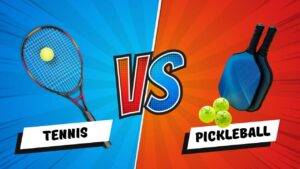Pickleball, the beloved blend of tennis, badminton, and ping-pong, has captured the hearts of sports enthusiasts worldwide. As the game evolves, so do its rules. In 2024, several updates have been made to enhance gameplay and ensure fair competition. Understanding these new rules is crucial whether you’re a seasoned player or a beginner just starting out. Join us as we explore the latest developments in pickleball regulations and how they impact the game.
Basic Pickleball Rules for Beginners
Before diving into the new rules, let’s review some fundamental aspects of pickleball for beginners:
-
- Court and Equipment: Pickleball is typically played on a court similar to a tennis court but smaller in size. Players use solid paddles and a perforated plastic ball, similar to a wiffle ball.
-
- Scoring: Games are usually played to 11 points, and a team must win by at least two points. Points can only be scored by the serving team.
-
- Serve: The serve is where every point begins. It must be hit underhand and diagonally across the net to the opponent’s service court. Players must serve from behind the baseline and avoid stepping over it.
-
- Volleying: Players are not allowed to volley (hit the ball in the air without letting it bounce) while standing within the non-volley zone, often referred to as the “kitchen.”
Now, let’s delve into the new rules introduced in 2024 and how they impact the game.
Drop Serve Pickleball Rules
One of the notable updates to the pickleball rules in 2024 is the introduction of the drop serve. This serves as an alternative to the traditional underhand serve and adds a new dimension to serving strategy. Here’s how the drop serve works:
-
- Technique: Unlike the traditional underhand serve, the drop serve involves dropping the ball and hitting it after it bounces once on the ground. This allows for greater control and precision in placing the serve.
-
- Placement: The drop serve must still be directed diagonally across the net to the opponent’s service court, similar to the traditional serve. However, the bounce before the hit can create additional challenges for the receiving team.
-
- Variation: The drop serve adds variety to a player’s serving repertoire, making it harder for opponents to anticipate the serve. Players can mix up their serves between traditional underhand serves and drop serves to keep their opponents guessing.
Serving in Pickleball Rules: Key Updates
In addition to the introduction of the drop serve, several updates have been made to the rules governing serving in pickleball. Here are some key changes to be aware of:
-
- Service Faults: The criteria for service faults have been clarified to ensure consistency and fairness. Players must ensure that their serves land within the correct service court and avoid stepping over the baseline while serving.
-
- Let Serves: The rules regarding let serves, where the ball hits the net but still lands in the correct service court, have been refined. Let serves now result in a redo of the serve without penalty, allowing for a fairer outcome.
-
- Service Order: The sequence of serving within a game remains unchanged, with both players on a team getting a chance to serve before the serve switches to the opposing team. This ensures equal opportunities for both teams to score points.
Pickleball Rules vs. Tennis: A Comparison

While pickleball shares similarities with tennis, such as the use of a net and a court divided into service areas, there are notable differences in their rules and gameplay. Here’s a comparison of pickleball rules with tennis:
-
- Court Size: Pickleball courts are smaller than tennis courts, making them more accessible for players of all ages and skill levels. The smaller court size also promotes fast-paced rallies and strategic gameplay.
-
- Scoring System: Pickleball uses a simpler scoring system compared to tennis, with points only being scored by the serving team. Games are typically played to 11 points, whereas tennis games consist of sets and matches.
-
- Serve Technique: In pickleball, players must use an underhand serve, whereas tennis typically involves an overhand serve. The underhand serve in pickleball adds a unique challenge and emphasizes skill and control over power.
-
- Volleys and Non-Volleys: Pickleball has specific rules regarding volleys (hitting the ball in the air without letting it bounce), particularly within the non-volley zone or “kitchen.” This encourages players to rely on strategy and placement rather than sheer power.
Wrapping Up
As pickleball continues to gain popularity, staying updated on the latest rules and regulations is essential for players of all levels. The new rules introduced in 2024, including the drop serve and refinements to serving regulations, add depth and excitement to the game. Whether you’re a beginner learning the basics or a seasoned player looking to improve your skills, understanding these rules will enhance your pickleball experience and elevate your gameplay.
In conclusion, pickleball is more than just a game—it’s a dynamic and engaging sport that fosters camaraderie and competition. By familiarizing yourself with the rules and embracing the spirit of the game, you can enjoy all that pickleball has to offer and embark on an exciting journey of skill development and friendly competition.
